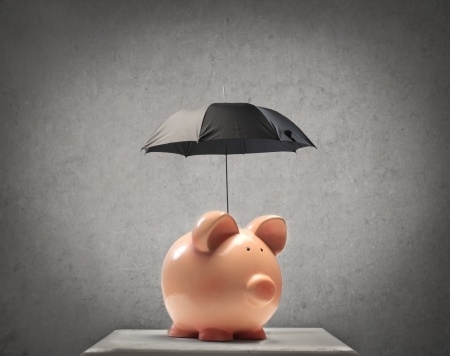
By FINRA Investor Education Foundation Staff
Most of us appreciate a sturdy umbrella on a stormy day. We don’t always know when we’ll encounter rain, but unless we live in the desert, we know that eventually rain will fall. So we buy umbrellas, raincoats and boots to protect ourselves against the inevitable downpour.
Rainy day funds, or emergency savings, protect us too. We can’t always predict when we’ll have a money emergency, but we know that eventually a financial crisis will arrive. Setting aside money in a rainy day fund shelters you from a financial storm.
Chances are, you’ve already experienced a financial squall or two; it’s tough to go through life without them. An unexpected automobile or home repair, a surprise tax bill, or an unplanned trip home for a funeral or wedding all qualify.
Sometimes, financial rainfall lands not in the form of a bill to pay, but as a sudden loss of income. This could be due your spouse’s layoff, a divorce or your unplanned separation from the service.
It’s a good idea to make a rainy day fund one of your highest savings priorities. Put $20 a week in an emergency fund and your account will grow to over $1,000 in just one year. That’s often enough to cover a repair bill or emergency travel. A rainy day fund can also shield you from the high cost of borrowing, and keep you from hydroplaning into debt.
A good way to set up a rainy day fund is to save automatically. Arrange to put money into an emergency fund account through an allotment from your military pay. You can accomplish the same thing through a systematic transfer from your regular checking or savings account at your bank or credit union. Keep your rainy day funds separate from your checking account, and label it “for emergency use only.” Just writing down an account’s purpose can keep you from spending the money for any other reason. Visit Start an Emergency Fund on SaveAndInvest.org for more tips.
Even if you start out small, keep saving. You should put aside enough in your rainy day fund eventually to cover living expenses for 3 – 6 months. If you anticipate a job loss or separation from the service, try to save even more.
An easy way to save for your rainy day fund is by taking the Military Saves Savers’ Pledge. Choose “Emergency Fund” from the drop-down menu. It’s a commitment you make to yourself to take shelter from financial storms.
We know that rainfall is inevitable, and we prepare for it. Like an umbrella sheds rain, a rainy day fund sheds financial rainfall. Storms arise unexpectedly. Protect yourself—with a rainy day fund.